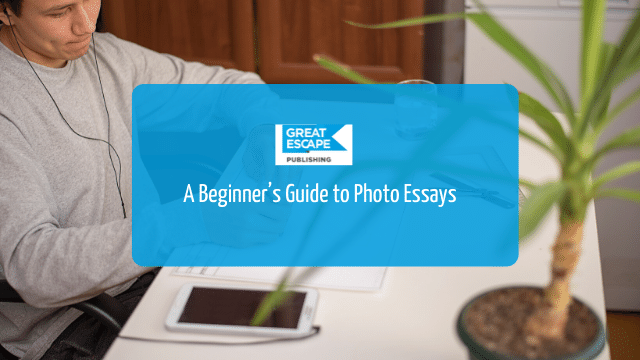If you’re not so handy with a pen but have a good eye for photography, photo essays could be your best route into the world of online and print media.

Compared with written articles, photo essays can be a much easier way to get your foot in the door with new publications. If it’s true what they say, that pictures speak a thousand words, then you don’t have to worry as much about crafting a perfectly worded pitch.
With a fairly good camera or smartphone and a little bit of knowledge in the realm of photo essays, you can quickly find yourself on the road to financial success. So, let’s dive right in.
What is a photo essay?
Put simply, it is one way of telling a story. Instead of using written or spoken word, this type of visual storytelling shows a small slice of the world through the lens of a camera.
A photo essay can be short, starting with only three shots. They just have to portray the essence of any story: a start, middle, and end.
Alternatively, photo essays can range into the double or even triple figures, such as professional photojournalist Tomas van Houtryve’s Blue Sky Days, an epic and often chilling 16-page photo journal.
Crafting a good story through photography
What makes a good story? Any writer will tell you it’s about creating within your reader the desire to know what happens.
As with a good written story, great photo essays should drive an audience through your telling of events, keeping them engaged from start till end. You need to hook people with that very first image and keep them engaged with progressive steps that build toward an ending.
You don’t always need to be telling a sequenced story. But, you do need to give a sense of building toward something. For instance, you wouldn’t want to have your best three photos at the get go and nothing to impress and reward the viewer at the end.
A few ideas to get you started
Perhaps one of the easiest stories to start telling through photography is that of transformation. Examples could include a new building being built in your city, a botanical garden moving through the seasons, or your niece going from belly to baby and beyond. What’s great about long-term transformation is it tends to give you plenty of time for planning.
Event photography takes the difficulty up a notch but can still be planned out in advance. Let’s say there’s a music festival or running race coming to town, converse with the organizers, get yourself acquainted with the venue, and familiarize yourself with the schedule. Then, on the day, snap away from setup through to the actual event right along to the aftermath.
Third, and more difficult, is to capture a journey. This can include yourself as the subject moving through different environments, someone you’re traveling with, local people you meet along the way, or primarily focusing on various locations/landmarks—to name but a few ideas. This one is trickier because you don’t have time to plan in advance what shots you want, nor do you have the luxury of knowing when/where something interesting will happen. You have to be primed and ready every step of the way.

